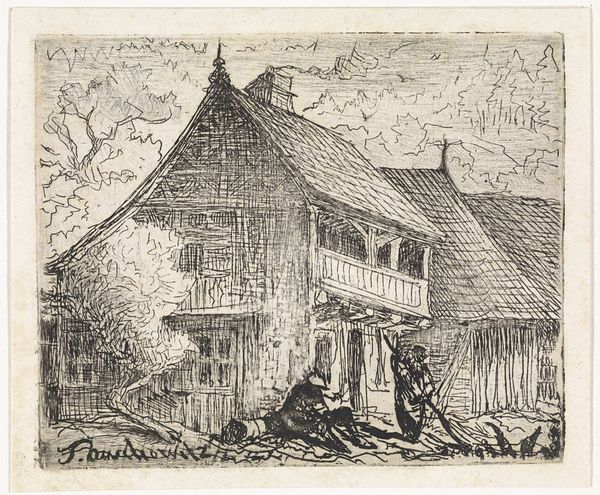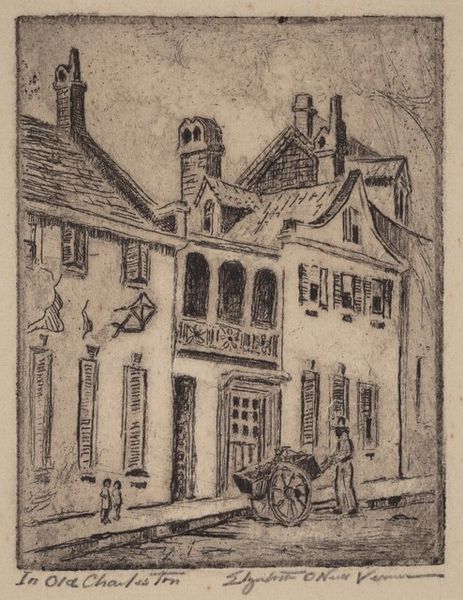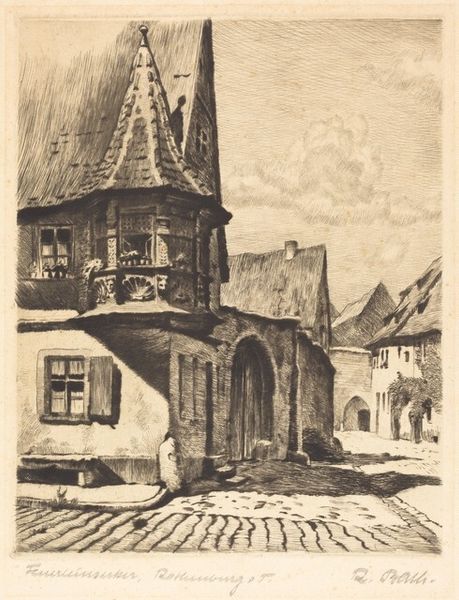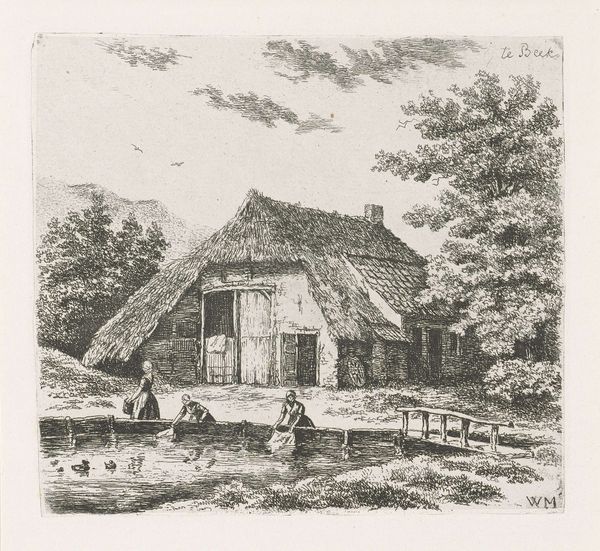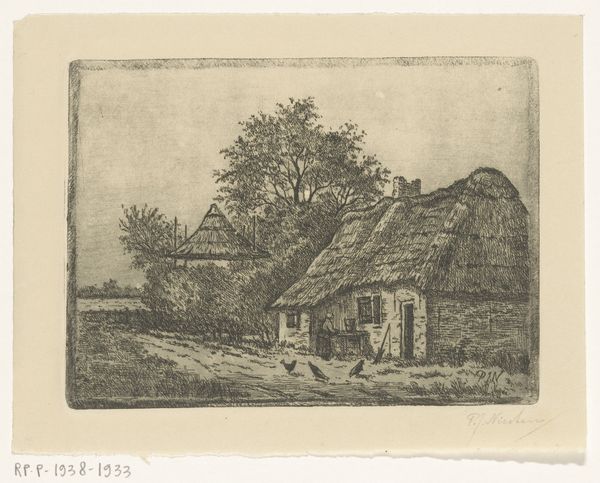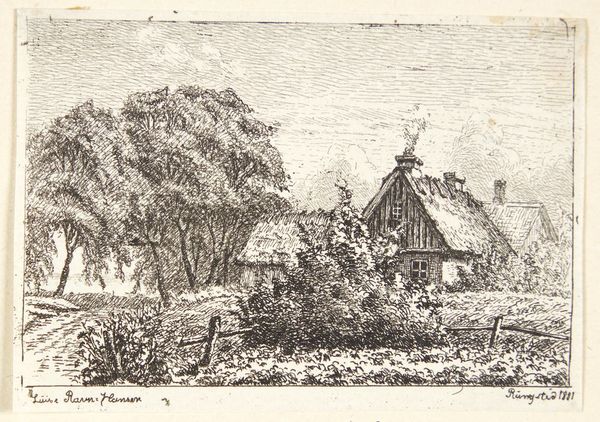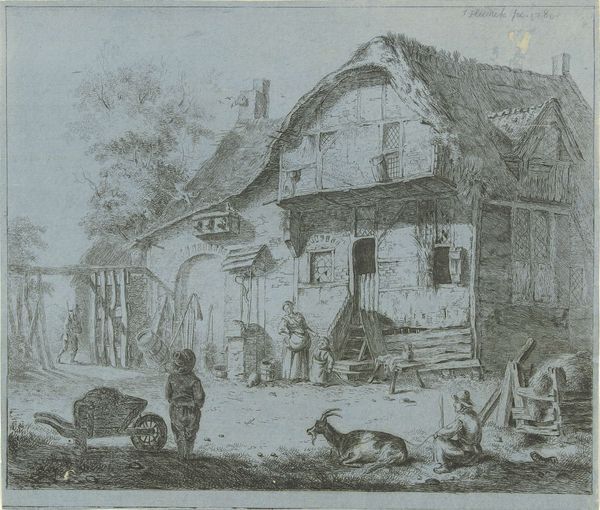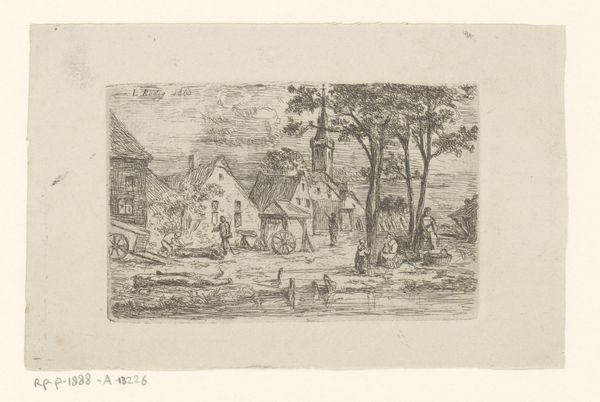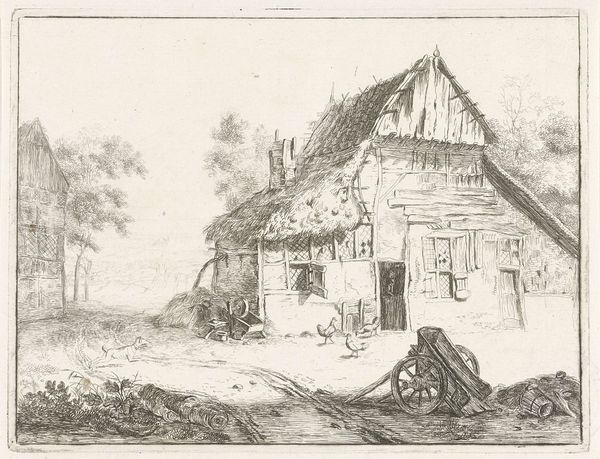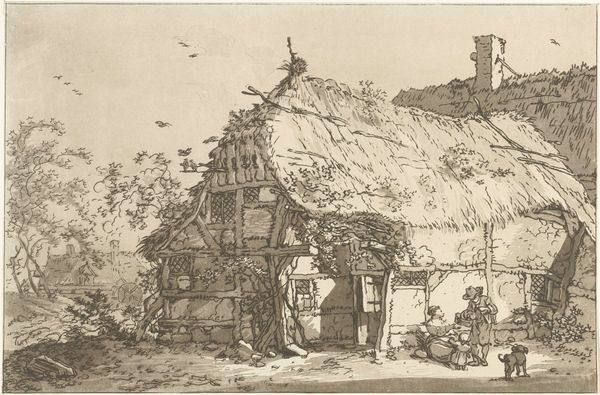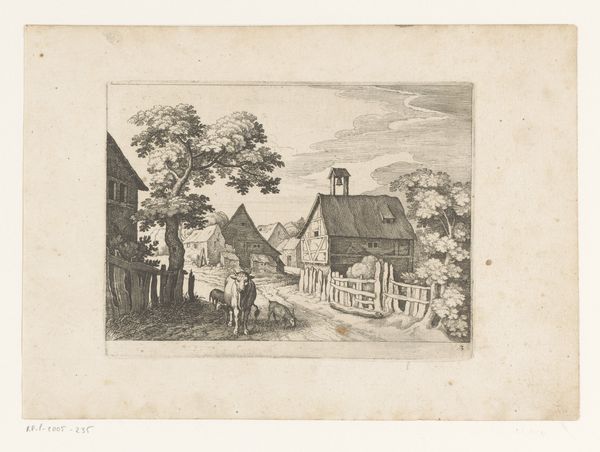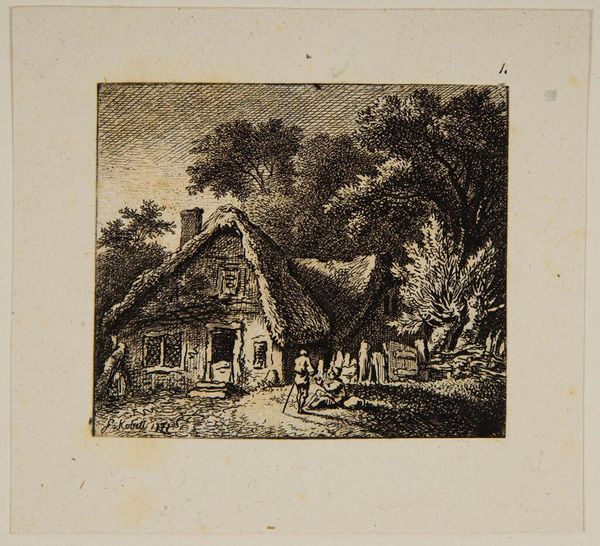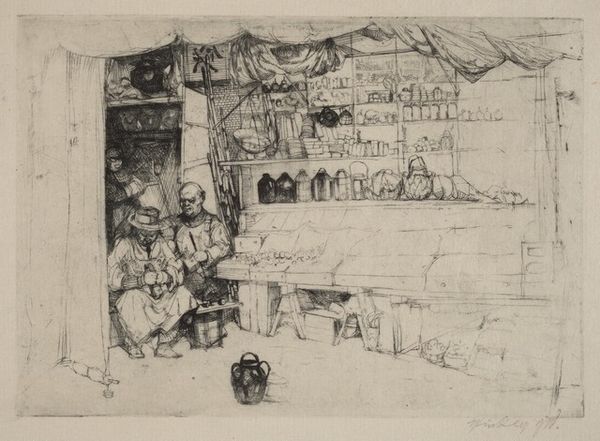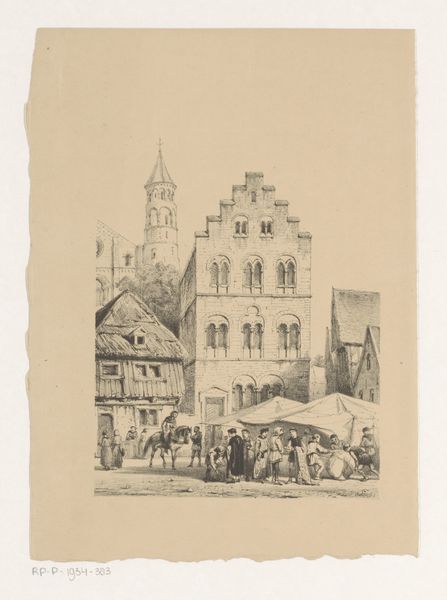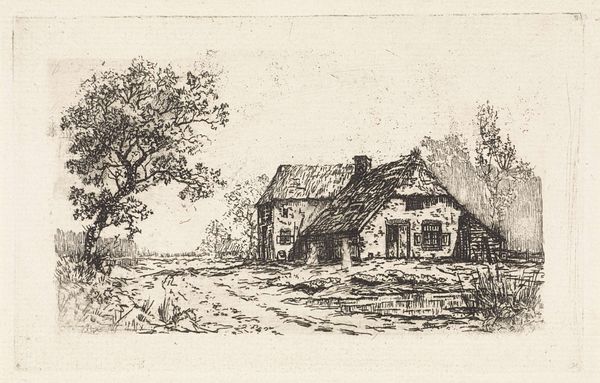
print, etching
# print
#
etching
#
landscape
#
genre-painting
#
realism
#
monochrome
Copyright: National Gallery of Art: CC0 1.0
Curator: There's something profoundly nostalgic about this etching. I mean, it makes me want to light a candle and tell stories. What do you see, straight off? Editor: It's melancholy, isn't it? That washed-out monochrome immediately sets a tone of reflection. It speaks of old villages, weathered faces, stories passed down...a visual memory. Curator: Indeed! This is "Tevia's Household" by Anatoli Kaplan, likely made sometime between 1957 and 1961. Kaplan captures everyday scenes with an almost obsessive level of detail through etching. The lives are inspired by Sholem Aleichem’s Tevye the Milkman, a character filled with humor and humanity. Editor: The very act of choosing etching suggests an understanding of depth and process. Notice how Kaplan’s dense network of fine lines creates a textured tapestry capturing more than just appearances; the deep blacks and softer grays give life to labor, warmth, and family. The monochrome palette lends itself, really, to symbolism by stripping bare visual rhetoric to convey meaning! Curator: Yes! I get a feeling he's not just showing us what it looks like, but how it *feels* to exist within this space. You can almost hear the chatter of the yard. I appreciate the choice to focus on domesticity—it celebrates, in the smallest and simplest way, ordinary acts. Milking cows. Walking with children. These scenes, in their way, defy any force that says "you can't". Editor: Right. Milkmaids symbolize abundance, new life, renewal. I can't help but to interpret this through an archetype—the house sheltering the community, figures gathering, livestock symbolizing nourishment...all classic motifs echoing across time. These are fundamental ideas about roots and community. Curator: Perhaps this piece becomes even more touching when viewed against Kaplan's life. Persecution against the Jewish community occurred in this location only years before it was produced—seeing Kaplan reflect back here is to also know he is making some effort towards survival and endurance, by reminding all of the beauty and value in humble ways of living and the strength and vulnerability to be found there, for one's people and one's person. Editor: Well said. And considering all that weight and history...perhaps what at first glance seemed simply a "melancholy scene," actually radiates resilience, defiance, quiet celebration of life itself, its inherent cycles, regardless of the noise from without. It becomes both specific and utterly universal. Curator: In some way, I feel like that has helped me begin to actually know the work! Editor: Yes, it seems we each now hold onto an element of it that will keep unfolding within us.
Comments
No comments
Be the first to comment and join the conversation on the ultimate creative platform.
